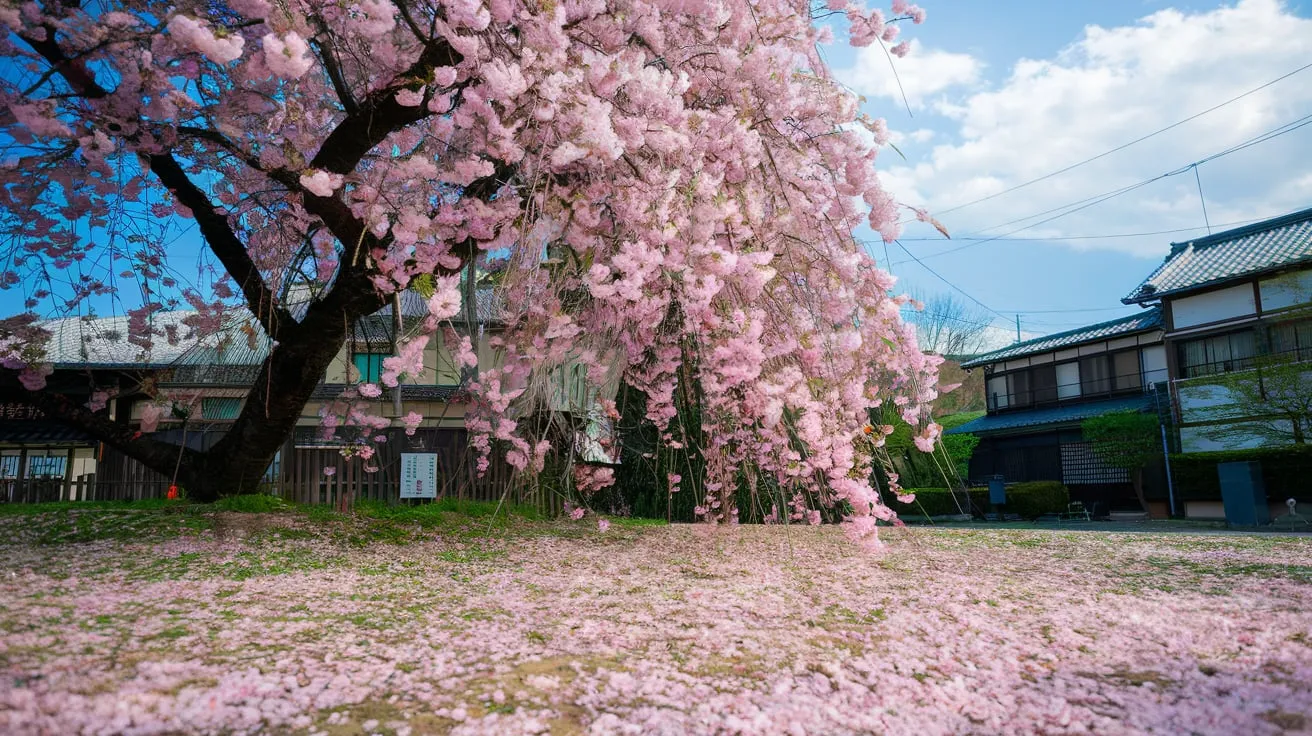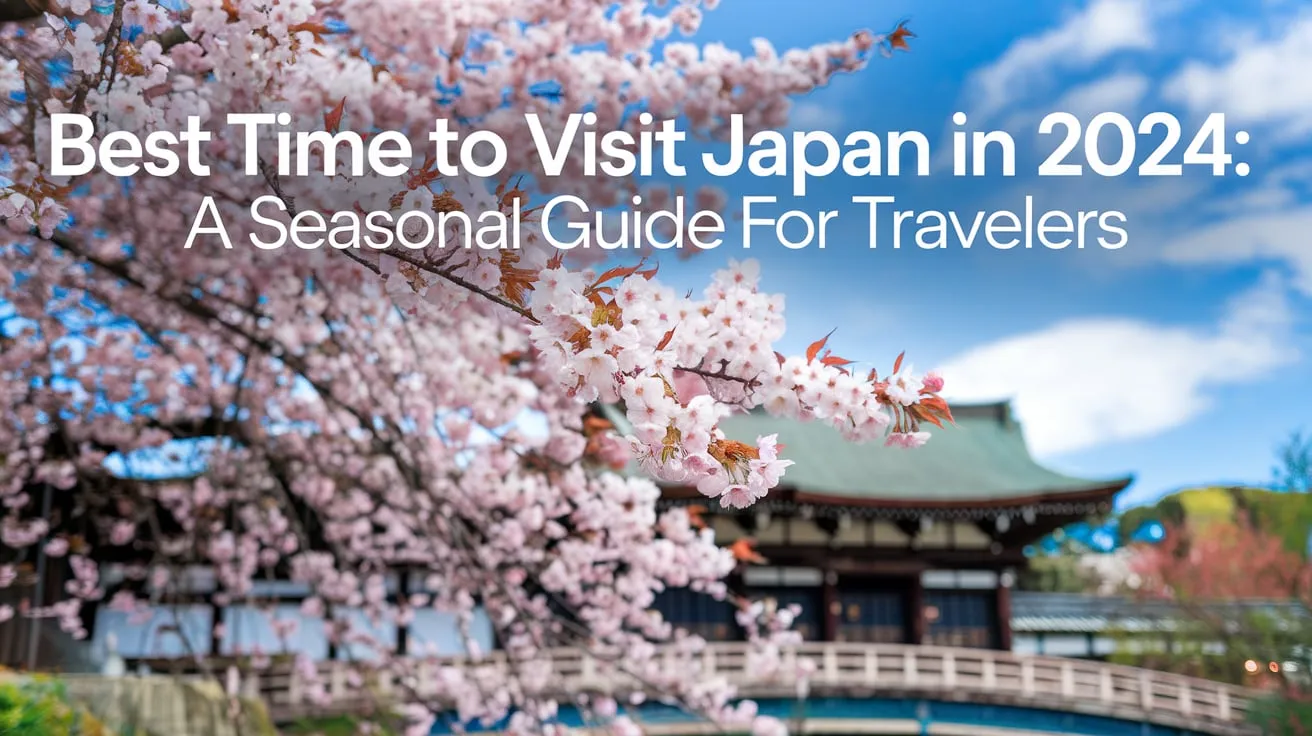Introduction
Planning a trip to Japan in 2024? Japan is a country known for its distinct seasonal changes and breathtaking natural beauty all year round. Understanding the weather patterns and cultural significance of each season can help you make the most of your visit. In this seasonal guide, we will take you through the best times to visit Japan in 2024, highlighting the key events and festivals that make each season unique.
Understanding Japan’s Seasonal Changes
Japan experiences four distinct seasons: spring, summer, autumn, and winter. Each season brings its own charm and allure, showcasing the country’s natural wonders in different ways. From delicate cherry blossoms in spring to vibrant fall foliage in autumn, there is something magical about experiencing Japan’s seasonal transformations.
Exploring Japan during these seasonal changes allows visitors to witness the country’s rich tapestry of natural beauty and cultural traditions. The transition from one season to another is marked by unique events and activities that highlight Japan’s deep-rooted connection to the environment.
The Significance of Japan’s Four Seasons
In Japanese culture, the changing seasons are deeply ingrained and hold great significance. Each season is celebrated with traditional festivals and rituals, reflecting the Japanese people’s deep connection with nature. The appreciation for the seasons is prevalent in art, poetry, and even culinary traditions, making it a unique and enriching experience for visitors.
Traditional Japanese arts, such as ikebana (flower arranging) and haiku poetry, often draw inspiration from the beauty of the changing seasons. These art forms capture the essence of each season, portraying the delicate cherry blossoms of spring or the serene snowscapes of winter with grace and elegance.
How Weather Varies Across Regions in Japan
Before diving into the specifics of each season, it’s essential to understand how weather patterns vary across different regions in Japan. The geography and topography of the country result in diverse climates and varying temperatures. From the mild coastal regions to the snowy mountainous areas, Japan offers a wide range of climates and landscapes.
Traveling from the bustling city of Tokyo to the tranquil countryside of Kyoto showcases the contrast in weather patterns and seasonal changes within the same country. While Tokyo may experience milder winters, Kyoto’s mountainous surroundings often bring colder temperatures and heavier snowfall during the winter months, creating a picturesque winter wonderland.
Read More: Best Places to Visit in Indonesia: Your Complete Travel Itinerary
Spring in Japan: Cherry Blossoms and Festivals
Spring is undoubtedly one of the most popular seasons to visit Japan, as it heralds the arrival of cherry blossoms, known as “sakura.” The delicate pink flowers paint the landscapes in shades of pink and white, creating a surreal atmosphere.
What to Expect in March, April, and May
In March, the cherry blossom season begins in the southern regions of Japan, gradually moving northwards. April is the peak time to witness the full bloom, with hanami (flower viewing) parties taking place in parks and gardens across the country. May sees the arrival of warmer temperatures and the emergence of colorful spring flowers.
Key Events and Festivals in Spring
In addition to cherry blossoms, spring in Japan is also a time for various festivals and celebrations. The most famous of them all is the hanami parties, where locals and visitors alike gather under the cherry blossom trees to picnic and admire the blossoms. Other notable festivals include the Golden Week, a series of national holidays in late April to early May, and the Sanno Matsuri in Tokyo, one of the city’s grandest festivals.
Summer in Japan: Beaches and Fireworks
Summer in Japan brings with it a mix of vibrant festivals, breathtaking fireworks displays, and the perfect beach weather. While the high humidity can be challenging, there are plenty of ways to cool off and enjoy the summer delights.
What to Expect in June, July, and August
June marks the beginning of summer, with comfortable temperatures and occasional rain showers. July and August are typically the hottest months, with the mercury rising and the humidity levels soaring. However, this is also the season for vibrant matsuri (festivals), mesmerizing fireworks displays, and lively beach activities.
Key Events and Festivals in Summer
Summer in Japan is a time for lively festivals and iconic fireworks displays. The Gion Matsuri in Kyoto is one of Japan’s most famous festivals, featuring majestic floats and traditional performances. The Sumida River Fireworks Festival in Tokyo and the Omagari Fireworks Competition in Akita are two of the largest fireworks displays, attracting millions of spectators.

Autumn in Japan: Fall Foliage and Harvest
Autumn, with its stunning display of vibrant colors, is another favorite season for travelers. As the leaves change from green to hues of red, orange, and golden yellow, the landscapes of Japan transform into a mesmerizing palette of colors.
What to Expect in September, October, and November
In September, as summer transitions into autumn, the temperatures become milder, creating comfortable weather for outdoor activities. October is when the fall foliage season begins, starting from the northern regions and gradually spreading southwards. November marks the peak of autumn colors, offering breathtaking views throughout Japan.
Key Events and Festivals in Autumn
Autumn in Japan is not only about the picturesque fall foliage but also a time for harvest celebrations and traditional cultural events. The Meiji Jingu Gaien Ginkgo Festival in Tokyo and the Arashiyama Hanatouro in Kyoto are two events that showcase the beauty of autumn foliage. Additionally, autumn is the season for regional food festivals, where you can savor locally-grown produce and traditional delicacies.
Winter in Japan: Snow Festivals and Hot Springs
Winter in Japan is a magical season, with snowy landscapes, hot springs, and unique cultural experiences. While the temperatures can be cold, the beauty and charm of winter make it a worthwhile visit.
What to Expect in December, January, and February
December marks the beginning of winter, with cooler temperatures and occasional snowfall. January and February are typically the coldest months, with heavy snowfall in many regions, especially in northern Japan. This is the ideal time for winter sports enthusiasts and those looking to experience traditional hot springs (onsen).
Key Events and Festivals in Winter
Winter in Japan is renowned for its awe-inspiring snow festivals and illuminations. The Sapporo Snow Festival in Hokkaido is one of the most famous, featuring impressive ice sculptures and captivating light displays. The Shirakawa-go Winter Light-Up in Gifu is another enchanting event, where traditional thatched-roof houses are illuminated, resembling scenes from a fairytale.
Conclusion
With its distinct seasonal changes and a myriad of cultural events, Japan offers a unique experience for travelers throughout the year. Each season brings its own charm and beauty, allowing you to immerse yourself in the rich traditions and awe-inspiring landscapes of the country. Whether you decide to visit during the sakura season, cool off on the beaches in summer, witness the stunning fall foliage, or embrace the winter wonders, Japan is sure to leave you with unforgettable memories.
FAQs
Is Japan Safe to Visit in 2024?
Yes, Japan is generally very safe for travelers in 2024. It is known for its low crime rate, clean and efficient public transportation, and polite society. However, like traveling anywhere, it’s wise to take standard precautions such as being aware of your surroundings, securing your belongings, and following local regulations. Be aware of any specific health advisories or travel restrictions that may be in place.
What is the Best Way to Travel Around Japan?
- Japan Rail Pass: Ideal for long-distance travel across Japan. It offers unlimited rides on JR trains and is a cost-effective option if you plan to visit multiple cities.
- IC Cards: Use Suica or Pasmo cards for seamless travel on trains, subways, and buses within cities. They can also be used for small purchases.
- Local Trains and Subways: Efficient and well-connected for getting around cities.
- Taxis: Available in most areas, though they can be expensive.
- Bicycles: Many cities offer bike rental services, ideal for short distances.
- Domestic Flights: Useful for traveling between distant cities like Tokyo and Okinawa.
How Much Does the Japan Rail Pass Cost in 2024?
As of 2024, the Japan Rail Pass costs:
- 7-day pass: Approximately ¥33,610 (about $225 USD).
- 14-day pass: Approximately ¥52,960 (about $350 USD).
- 21-day pass: Approximately ¥66,200 (about $440 USD).
Prices may vary slightly depending on the exchange rate and any changes in the pass’s pricing structure.
What Are the Top Attractions in Tokyo in 2024?
- Tokyo Tower: Iconic landmark offering panoramic views of the city.
- Senso-ji Temple: Historic temple located in Asakusa, famous for its bustling street market.
- Shibuya Crossing: One of the busiest pedestrian crossings in the world, a must-see for its energy and scale.
- Shinjuku Gyoen National Garden: A beautiful park and garden perfect for a relaxing stroll.
- Akihabara: The hub for electronics, anime, and manga enthusiasts.
- Tokyo Skytree: A modern marvel with observation decks providing stunning city views.
- Ginza: Upscale shopping and dining district known for its luxury boutiques and department stores.
What to Eat in Japan During 2024?
- Sushi and Sashimi: Fresh seafood dishes that are a staple of Japanese cuisine.
- Ramen: Popular noodle soup with various regional styles like Tonkotsu, Shoyu, and Miso.
- Tempura: Lightly battered and deep-fried seafood and vegetables.
- Okonomiyaki: Savory pancake filled with a variety of ingredients, popular in Hiroshima and Osaka.
- Takoyaki: Octopus balls, a popular street food originating from Osaka.
- Kaiseki: Traditional multi-course Japanese meal, showcasing seasonal and regional ingredients.
- Matcha: Japanese green tea, used in both beverages and desserts like matcha ice cream and cakes.
